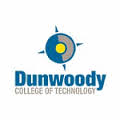What do they do?
Install, maintain, and repair electrical wiring, equipment, and fixtures. Ensure that work is in accordance with relevant codes. May install or service street lights, intercom systems, or electrical control systems.
Also known as:
Control Electrician, Electrical Journey Person, Electrical Troubleshooter, Electrician, Housing Maintenance Electrician, Industrial Electrician, Inside Wireman, Maintenance Electrician, Paper Mill Electrician, Wireman
-
8.4%
Change
Ranks #49 in job growth rate2,950Job Openings
Ranks #8 in net job growth
-
Southern California Institute of Technology
Anaheim, CA
-
Lincoln Technical Institute-Union
Union, NJ
-
Escuela Tecnica de Electricidad
Ponce, PR
-
Lincoln Technical Institute-Mahwah
Mahwah, NJ
-
Pennco Tech-Bristol
Bristol, PA
Looking for colleges that offer a specific major? Use the College Match Tool to find your best-matched schools and discover your estimated Net Price!
- Doctorate or Professional Degree (<1%)
- Master's degree (1%)
- Bachelor's degree (7%)
- Associate's degree (16%)
- Some college, no degree (30%)
- High school diploma equivalent (38%)
- Less than high school diploma (8%)
People in this career often have these skills:
- Troubleshooting - Determining causes of operating errors and deciding what to do about it.
- Repairing - Repairing machines or systems using the needed tools.
- Active Listening - Giving full attention to what other people are saying, taking time to understand the points being made, asking questions as appropriate, and not interrupting at inappropriate times.
- Speaking - Talking to others to convey information effectively.
- Critical Thinking - Using logic and reasoning to identify the strengths and weaknesses of alternative solutions, conclusions, or approaches to problems.
People in this career often know a lot about:
- Building and Construction - Knowledge of materials, methods, and the tools involved in the construction or repair of houses, buildings, or other structures such as highways and roads.
- Administration and Management - Knowledge of business and management principles involved in strategic planning, resource allocation, human resources modeling, leadership technique, production methods, and coordination of people and resources.
- Mechanical - Knowledge of machines and tools, including their designs, uses, repair, and maintenance.
- Mathematics - Knowledge of arithmetic, algebra, geometry, calculus, statistics, and their applications.
- Design - Knowledge of design techniques, tools, and principles involved in production of precision technical plans, blueprints, drawings, and models.
People in this career often have talent in:
- Problem Sensitivity - The ability to tell when something is wrong or is likely to go wrong. It does not involve solving the problem, only recognizing that there is a problem.
- Near Vision - The ability to see details at close range (within a few feet of the observer).
- Deductive Reasoning - The ability to apply general rules to specific problems to produce answers that make sense.
- Inductive Reasoning - The ability to combine pieces of information to form general rules or conclusions (includes finding a relationship among seemingly unrelated events).
- Oral Comprehension - The ability to listen to and understand information and ideas presented through spoken words and sentences.
- Information Ordering - The ability to arrange things or actions in a certain order or pattern according to a specific rule or set of rules (e.g., patterns of numbers, letters, words, pictures, mathematical operations).
- Finger Dexterity - The ability to make precisely coordinated movements of the fingers of one or both hands to grasp, manipulate, or assemble very small objects.
- Arm-Hand Steadiness - The ability to keep your hand and arm steady while moving your arm or while holding your arm and hand in one position.
- Visual Color Discrimination - The ability to match or detect differences between colors, including shades of color and brightness.
- Extent Flexibility - The ability to bend, stretch, twist, or reach with your body, arms, and/or legs.
- Written Comprehension - The ability to read and understand information and ideas presented in writing.
- Oral Expression - The ability to communicate information and ideas in speaking so others will understand.
- Visualization - The ability to imagine how something will look after it is moved around or when its parts are moved or rearranged.
- Trunk Strength - The ability to use your abdominal and lower back muscles to support part of the body repeatedly or continuously over time without "giving out" or fatiguing.
People in this career often do these activities:
- Create construction or installation diagrams.
- Thread wire or cable through ducts or conduits.
- Repair electrical equipment.
- Test electrical equipment or systems to ensure proper functioning.
- Install electrical components, equipment, or systems.
- Update job related knowledge or skills.
- Plan layout of construction, installation, or repairs.
- Train construction or extraction personnel.
- Direct construction or extraction personnel.
- Inspect electrical or electronic systems for defects.
- Communicate with other construction or extraction personnel to discuss project details.
- Fabricate parts or components.
- Assist skilled construction or extraction personnel.
- Estimate construction project costs.
- Prepare operational reports.
- Order construction or extraction materials or equipment.
- Dig holes or trenches.
This page includes data from:

 Occupation statistics: USDOL U.S. Bureau of Labor Statistics Occupational Employment Statistics
Occupation statistics: USDOL U.S. Bureau of Labor Statistics Occupational Employment Statistics









